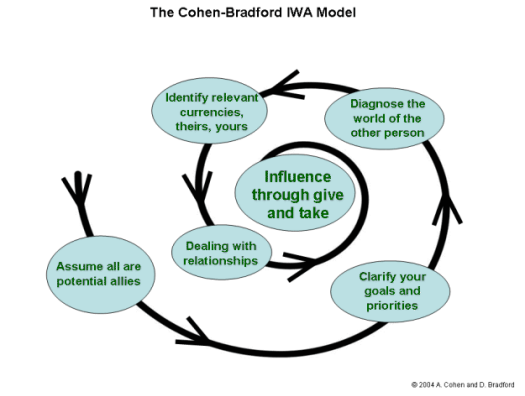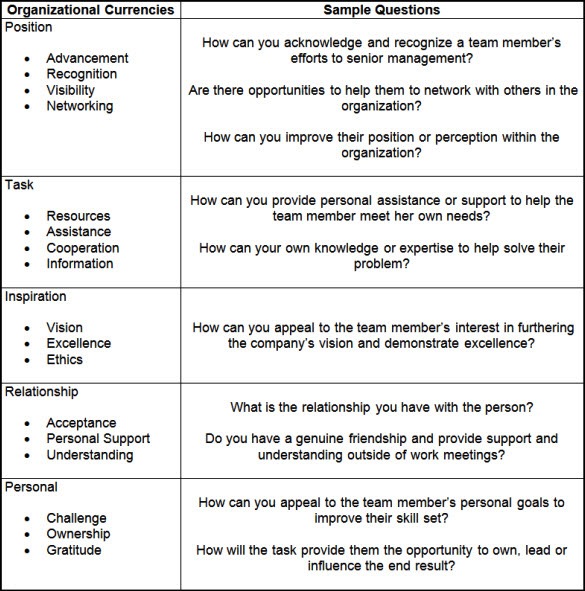Project managers are often put in the challenging position of having the responsibility for a project but limited authority over the people actually working on that project. Can’t you just imagine a world where all of the project teams would work with the efficiency of the orange-faced Oompa-Loompas from Charlie and the Chocolate Factory? Willy Wonka must have held some management secret over the pint-size doers to get them to unclog Augustus Gloop and juice Violet Beauregarde, all while singing an educational tune.
In reality, projects are not filled with chocolate rivers, Fizzy Lifting drinks and Everlasting Gobstoppers. Most project teams are made up of cooperative (and sometimes uncooperative) team members with different—and often competing—priorities. The project manager doesn’t always have authority over the entire project team in the traditional sense (i.e., the team members don’t “report” to the project manager). When project managers lack positional influence, they need to rely on other “organizational currencies” to influence others and get the job done.
In the book Influence Without Authority, Dr. Allan Cohen and Dr. David Bradford introduce the Cohen-Bradford Influence Model that describes how to influence others through a “give and take” exchange (Figure 1).

Effective project managers know they get work done by working well within their peer network. If someone does something for the project manager, there’s a good chance the project manager will do something for them in return. To pave the way for these exchanges, project managers need to build a “bank account” of organizational currencies.
Below are a few types of organizational currencies and a few sample questions to help you think about how to apply them:

Influence in Action
In one of my IT projects, the team needed additional servers that were not scoped in the original hosting order. Due to the demand for capacity, I knew the timeline to rack, stack and install servers could take several weeks. George, the infrastructure manager, already had a long list of server requests ahead of my project. I had to spend some of my organizational currency to improve my project’s place in the priority list. Based on the Cohen-Bradford model, I exchanged the following organizational currencies:
- Position-related: My project had high visibility with executive management and by pushing it through, George’s team got recognition for supporting a critical project.
- Task-related: I had cost information from outside vendors who provided a similar service. By sharing the information with George, he gained additional insight and competitive information that helped him develop a center of excellence within the company.
- Relationship-related: George and I had a personal friendship because we worked together over 6 years, three companies, many team lunches, coffee breaks, and general commiseration.
In this project, there were still challenges and other delays that couldn’t be resolved solely using organizational currency and peer-influence. However, by relying on the relationship we had and leveraging these organizational currencies, I was able to move the project forward.
Learn More About the Influence Without Authority Model
Influencing without authority isn’t an easy task. Project managers need to spend time to earn organizational currency with co-workers. Time isn’t a luxury many project managers can afford, but investing in relationship-building will ultimately help them be more productive and generate quicker consensus with project team members (for more information on the Cohen-Bradford model, please visit their website). Cohen and Bradford have several case studies and articles that take a deeper look at influencing without authority.
Until I find my Golden Ticket and inherit a team of Oompa-Loompas, I’ll continue to invest in my own organizational related currencies. Perhaps that’s how Willy Wonka kept an entire tribe of Oompa-Loompas on-task and happy.
Author’s note: A note of thanks goes to Dr.Cohen and Dr. Bradford for their permission to reprint their Influence Without Authority model in this article.
About the Author
Dr. Andrew Makar is an IT manager, author, instructor, and lecturer on a range of project management topics including PMO management, ERP implementation, application portfolio management, and infrastructure management.
 Schedule a demo of LiquidPlanner with a product expert today
Schedule a demo of LiquidPlanner with a product expert today







